The beauty industry is an innovative and dynamic sector, constantly evolving through a blend of science, technology, and creative expression. As beauty brands seek to meet ever-changing market trends, and deal with potential copycats, having a robust intellectual property portfolio is a crucial step. Of course, the focus will often be on protecting brand names and logos, as well as packaging design (through a mix of IP rights, including trade marks, designs and copyright). However, patents also play a central role in the beauty industry. As just one example, L'Oréal, one of the world's leading cosmetics companies, holds a significant number of patents, with over 370 international patent applications published in 2023.
Advantages of patent protection
A patent is a registered right that protects a technical invention (a product or a process). Obtaining patent protection has a number of advantages. A granted patent gives its owner a 20 year monopoly in the invention from the date of filing the patent application (assuming maintenance fees are paid). This means that you can take legal action against third parties using your invention without your consent, whether they copied it or acted in ignorance.
Although patents can be expensive – both in terms of applying for protection and if it becomes necessary to enforce a patent through litigation - they can be very useful assets when looking to raise investment. For this reason, beauty companies of all sizes might consider filing patent applications for one or more aspects of their products.
For example, while it is possible to patent cosmetic formulations (and even more broadly the ingredients making up those formulations) and their production methods, it is also possible to protect products and packaging through a patent. Many applicants may of course choose to protect their packaging through design right protection (aimed at protecting the look of a product). However, if the design has a technical aspect which is novel and inventive, it may also be worthwhile filing a patent application.
Key criteria
Patents may be obtained for inventions that:
- are new
- involve an inventive step
- are capable of industrial application
If an invention is disclosed to the public before the patent application is filed, the opportunity to patent it may be lost as the invention may no longer be 'new'. Care must therefore be taken to control public dissemination of information or prototype testing in public until after a patent is filed (or use Non-Disclosure Agreements, where appropriate).
Through the lens of some recent patent applications, in this article we consider some examples of technical innovation in the beauty industry.
Products
Conventional beauty products come in many shapes and sizes and have varying uses. They can improve the user experience, they can make removal of a product from the packaging easier and more efficient, or they could simply improve the application process. Companies have sought to obtain patent protection for developments in all these areas. For example, Cosmogen's application is aimed at protecting a brush for use with a fluid cosmetic product. The brush looks to minimise or reduce the amount of cosmetic product which would flow between the tufts of bristles in a regular brush.
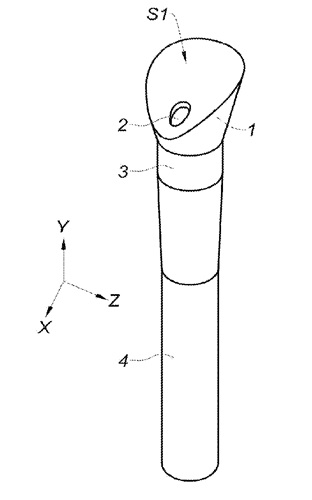
Figure 1 from Cosmogen's application
Another example is an application filed by L'Oréal, also aimed at a cosmetic applicator. The invention uses a convex, kite-shaped applicator to enable a user to apply a layer of sufficient thickness of the product over a relatively large area without requiring the user to reload the applicator too frequently, whilst also ensuring that the product can be accurately applied.
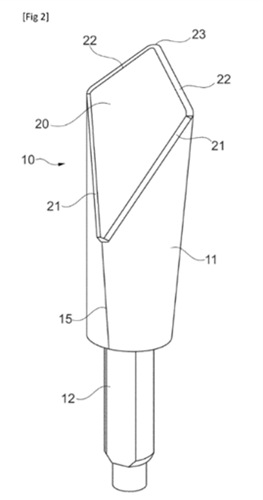
Figure 2 of L'Oréal's application
Digital developments
More recent developments in the beauty industry have focused on smart products i.e., products which measure and make use of information collected from a user during use. Examples of these devices include Procter & Gamble's application for a smart hair grooming device which aims to quantifiably measure the interaction of the device with a user's hair during brushing and Beiersdorf's application which aims to protect a method for recommending a product to a user based on an image of a user's skin, the amount of moisture determined to be on the user's skin, whilst also accounting for geographical parameters (i.e., localised moisture conditions).
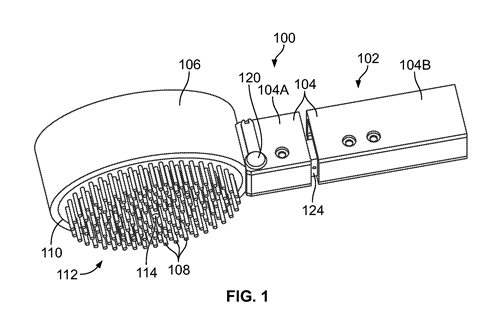
Figure 1 from P&G's application
Some developments are aimed exclusively at the digital space. They allow users to track personal health (e.g. skin conditions) and use virtual reality for makeup. Examples of developments in this space include an application filed by L'Oréal aimed at protecting a system and method for acne counting, localisation and visualisation.
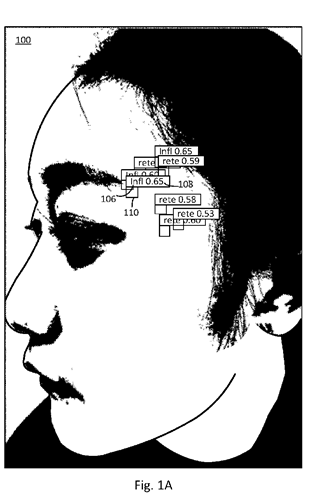
Figure 1A of L'Oréal acne patent
In a further example, Colgate filed an application for an intraoral diagnostic device. The device is designed to detect a number of oral health parameters by capturing a series of images of the inside of the mouth and processing the images using AI. The device may be connected to an app on a mobile device. A further application filed by L'Oréal aims to protect a digital artist system. The system provides an online look that can be stored and used across multiple platforms, with a part of the system involving a digital makeup artist.
Packaging
Recent examples of packaging innovation in the sector include developments with an environmental/sustainable focus. Unilever has recently filed an application aimed at sustainable packaging, stating that it can be made substantially free of "virgin petroleum-based compounds" by using post-consumer resin i.e., plastic that has already been recycled and has been repurposed. Corpack's cosmetics container application, meanwhile, is aimed at providing an environmentally friendly cosmetic container that allows for at least a partial refill by providing a tray which may releasably engage one or more cosmetics receptacles so that the receptacles may be replaced without requiring the entire container to be replaced.
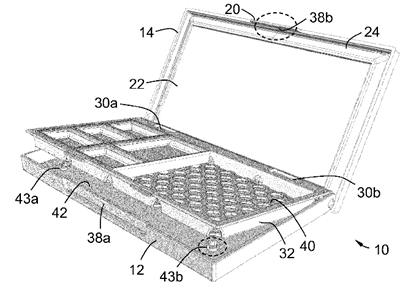
Figure 3B of Corpack's application
Compositions
Beauty businesses may also wish to protect cosmetic formulations (or compositions). They are often defined as a specific collection of ingredients, each being present in a specific amount. Recent innovation in this area has focused on natural beauty products (i.e., vegan and natural). One example is an application filed by L'Oréal for a 'lip composition' – with the advantages over earlier compositions including that the composition is clean, vegan and silicone-free. Other innovations in this area include compositions comprising CBD, such as Colgate's application directed to a deodorant comprising CBD with the aim of preventing skin irritation.
Trade secrets protection
Where patent protection is not available, or there are budgetary constraints, trade secrets may also be relied upon to protect a company's innovation. Indeed, trade secrets are often a business's most valuable asset. They require no registration and, unlike other IP rights, can last indefinitely. However, they are also potentially vulnerable and if it is possible to reverse engineer a product, a trade secrets claim may not be successful. Hence, where appropriate, patent protection (or other registered protection) should be considered.